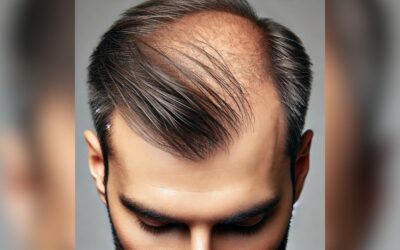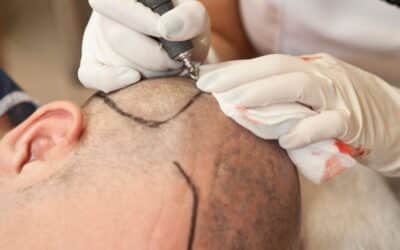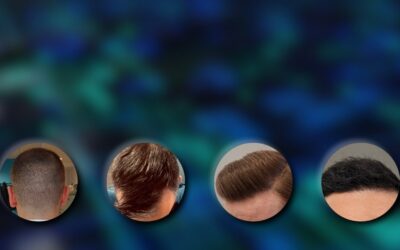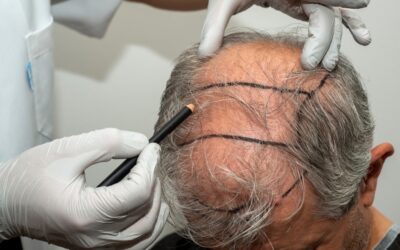Hair loss can be a concern for many. One solution is Follicular Unit Transplantation (FUT). This method has been used for years to help people regain their hair. This article will discuss the benefits of FUT. By the end, you’ll know if this procedure suits you.
How To Start the FUT Process?
Initial Consultation
The initial consultation is the first step in the FUT (Follicular Unit Transplantation) procedure. This meeting involves a detailed discussion with a hair loss expert like Doctor Greg Powell, who thoroughly examines the patient’s condition to understand the pattern of hair loss and recommend the best course of action. Here’s how it usually goes:
- Physician/Specialist: Doctor Greg Powell or a similar expert assesses the hair loss condition, analyzing the underlying causes and the extent of balding or thinning.
- Candidate Evaluation: Determine if you are suitable for the FUT treatment based on factors like hair type, age, and the degree of hair loss.
- Discussion of Expectations: The physician explains what results to anticipate and potential risks, ensuring that the patient’s expectations align with the achievable outcomes.
- Scheduling: A plan is made for the appointment, and the patient is advised to take some time off after the procedure for recovery.
- Travel Arrangement: The clinic may help organize a reliable ride home to ensure the patient’s comfort and safety post-procedure.
The Day of Procedure
On the day of the procedure, the patient is welcomed to the surgical center, where the staff prepares them for the surgery. After a final consultation with the surgeon, the process begins with anesthesia to ensure a comfortable experience. Here are the main steps involved:
Step 1: Removing the Donor Area
- Selection of Donor Area: The loose portion of the scalp with healthy hair is identified and removed. This area is chosen carefully to ensure the best match with the recipient region.
- Stitching: The remaining scalp sections, often with a “baseball” stitch, are stitched to allow for a neat and discreet scar.
Step 2: Separating Grafts
- Graft Preparation: The donor segment is carefully dissected into thousands of individual grafts, each containing one to four hair follicles.
- Placement: These harvested grafts are meticulously placed into tiny incisions in the recipient area using special tweezers, following the natural direction and angle of the existing hair.
Benefits of FUT

Follicular Unit Transplantation (FUT) significantly advances hair restoration methods. This provides you with the most authentic look possible. No hair plugs for you! No wig! If appropriately done by a qualified hair doctor, no one will be able to discern that any sort of procedure has been performed, thanks to the natural-looking results achieved through FUT. FUT offers a permanent solution to hair loss, and the process is relatively straightforward. It offers several advantages for those who qualify for this procedure:
Efficient Coverage for Extensive Hair Loss
FUT is known for harvesting many grafts in a single session. This makes it especially suitable for patients with considerable hair loss, offering them significant coverage in fewer sessions.
Established and Time-Tested Technique
Being one of the earliest hair transplantation methods, FUT has a long history of success. Decades of improvements and refinements have made it a reliable choice for many seeking hair restoration.
Preservation of Donor Hair Quality
The strip extraction method in FUT ensures that hair follicles are protected and remain undamaged. This enhances the chances of graft survival once transplanted.
Cost-Effective in Large Sessions
FUT can be more cost-effective than other methods for patients needing a substantial number of grafts. The ability to transplant large quantities in one session often requires fewer overall sessions.
Suitable for Different Hair Types
FUT is versatile and can be effective for various hair types and characteristics. Whether curly, straight, fine, or coarse, FUT can achieve satisfactory results for diverse patients.
Proven High Survival Rate of Grafts
The techniques employed in FUT contribute to a high survival rate for transplanted hair follicles. Proper handling and care ensure that a significant percentage of grafts thrive post-operation.
Scalable for Future Sessions
Even if a patient undergoes FUT once, it doesn’t restrict them from future sessions. The procedure can be repeated if further hair loss occurs or if the patient desires increased density.
Minimal Disturbance to Existing Hair
FUT focuses on transplanting follicles from the donor area without affecting the surrounding hairs. This means existing hair remains largely undisturbed, maintaining the patient’s current appearance.
Restoration of Self-Confidence
The most significant benefit is psychological. With a fuller head of hair, many patients report a boost in self-esteem and confidence, positively affecting their social and professional lives.
Why You Need FUT and How to Know This is a Good Option for You?

Hair loss can be distressing, affecting self-esteem and confidence. Amidst the various hair restoration methods available, Follicular Unit Transplantation (FUT) remains a popular and trusted choice. But how do you determine if it’s right for you? Let’s dive in.
Why You Might Need FUT:
- Extensive Hair Loss: FUT allows the transplantation of many hair follicles in one session, making it ideal for those with significant balding or thinning.
- Desire for Natural Look: The method focuses on transplanting individual hair follicle units, ensuring a natural and seamless integration with your existing hair.
- Seeking Proven Methods: FUT has been around for years, backed by a history of satisfactory results and advancements.
- Cost Considerations: If you need a substantial number of grafts, FUT might be more economical in the long run because of the ability to transplant more grafts per session.
How to Know FUT is a Good Option for You:
Here’s how you could lay it out:
| Criteria | Description |
| Consult a Specialist | A hair restoration specialist will assess the nature and extent of your hair loss, hair type, and scalp’s health. |
| Understand Your Expectations | If you want quicker coverage for extensive loss in fewer sessions, FUT could be preferable. |
| Consider Your Tolerance for Scarring | FUT might leave a linear scar on the donor area, usually at the back of the head. If you frequently sport short haircuts, discuss this aspect with your surgeon. |
| Research and Testimonials | Reading the experiences of others who underwent FUT can provide insights. However, remember that individual results may vary. |
Follicular Unit Transplantation (FUT) is a time-tested, effective solution for those battling hair loss. With a primary goal to deliver natural-looking results, FUT offers an array of benefits ranging from efficient coverage of extensive hair loss to preserving donor hair quality.
It’s vital to approach this method with informed expectations and an understanding its procedure. By collaborating with a trusted specialist and understanding your unique needs, you can discern whether FUT is the pivotal step in your hair restoration journey.
Book a consultation with our experts at Hair Transplants Los Angeles and take the first step towards a confident future with a fuller head of hair.
FAQs
While FUT does leave a linear scar, it’s typically concealed by existing hair and becomes less noticeable over time.
The procedure is performed under anesthesia, so patients shouldn’t feel pain during the surgery. Post-operative discomfort can be managed with prescribed pain relief.
Transplanted hairs using FUT are typically permanent, as they’re taken from areas resistant to hair loss. However, existing non-transplanted hair can still thin over time.
Many patients combine methods or turn to FUT after trying other techniques. Consultation with a specialist is essential to determine the best approach.
To ensure your ease of mind, you can view our customer recommendations HERE. Furthermore, you can also see our Google reviews and Yelp reviews. We can’t wait to help you start restoring your lost hair.











